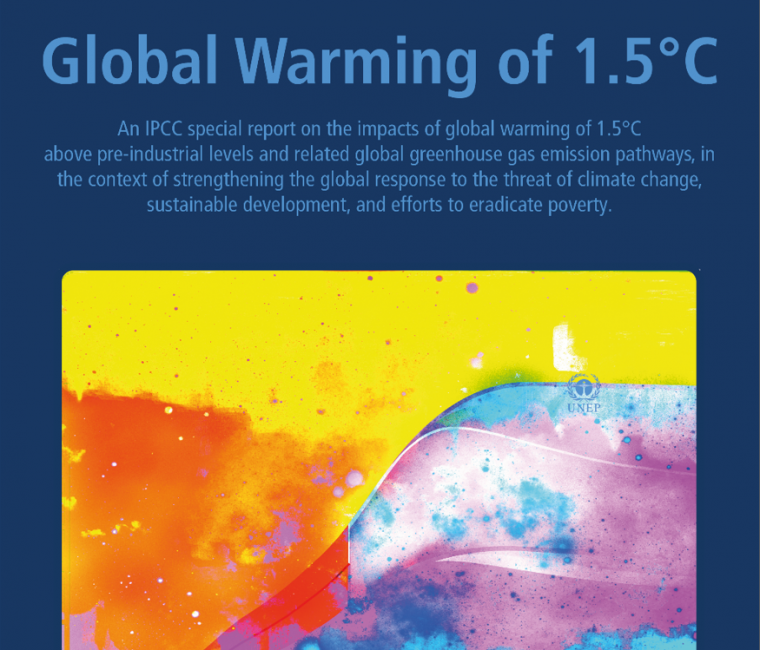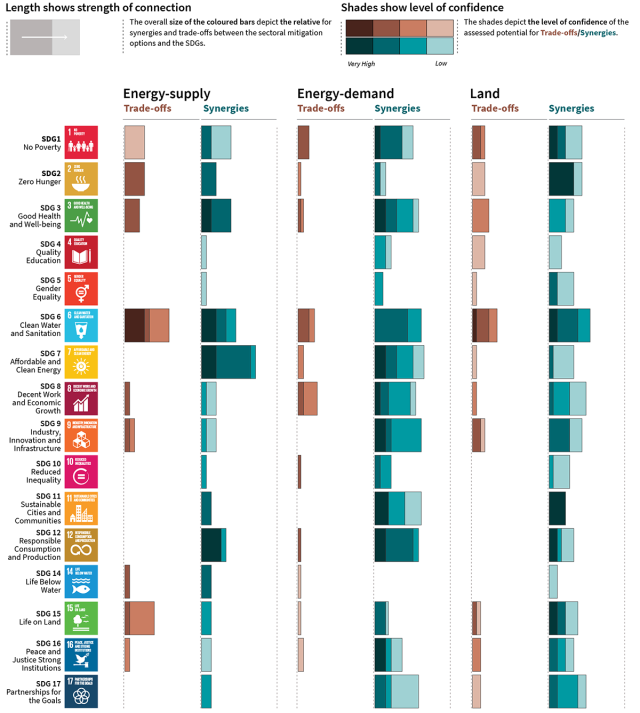
One of the biggest surprises leading up to the 2015 international Paris Agreement on climate-changing emissions was an argument about a new goal. Nations settled on a target of limiting global warming to no more than 2°C a while back. Most argument since has centered on the fact that our actions haven't been sufficient to reach that goal. But in Paris, a few vulnerable nations decided to stand up and say that 2.0°C wasn’t good enough. Low-lying island nations, for example, weren’t satisfied with negotiating toward a goal that might not even save them.
In the end, the Paris Agreement noted that nations were striving to keep warming “well below” 2°C. The problem with even a slight shift in goals is that the scientific work done in advance of the international talks hadn’t provided results for a 1.5°C scenario.
While government representatives are frankly buried by more high-quality scientific information than they really need to make sound decisions about the urgency of slowing climate change, they ordered up a 1.5°C addendum. After working overtime for the last couple of years, scientists volunteering for the Intergovernmental Panel on Climate Change (IPCC) have now provided a report summarizing what existing research tells us about a 1.5ºC warmer world.
The basic gist is hardly surprising—the impacts of 1.5°C warming are slightly less than 2.0°C, and it’s harder to cut greenhouse gas emissions fast enough to meet the lower target. But when you put numbers on these things, some effects are particularly notable, and the roadmap to emissions cuts becomes crystal clear.
A new world
The report notes that we are currently at a warming of about 1.0°C, with the warming trend rolling along at 0.2±0.1°C per decade. If we eliminated all our emissions today, we would still see a bit more warming (as sunlight-reflecting aerosol pollution quickly washed out of the atmosphere, for example) but probably not enough to send us coasting helplessly across the 1.5°C limit. Still, at our current rate, we’re set to reach 1.5°C between 2030 and 2052.
Some impacts of climate change show particularly large jumps between 1.5 and 2.0°C. Heat waves, heavy precipitation, and regional droughts increase steeply, along with their related human health impacts. Ecosystems, too, would benefit greatly from limiting warming. Of the more than 100,000 terrestrial species that have been studied, for example, the number expected to disappear from half their range doubles between 1.5 and 2.0°C. Coral reefs have a particularly dire outlook. We expect to lose 75 to 90 percent of coral reefs by 1.5°C; at 2.0 °C, that number is over 99 percent.
The report estimates that sea-level rise in the year 2100 would be around 10 centimeters lower in a 1.5°C world than a 2.0°C world. That may not sound like much in comparison to oft-discussed worst-case scenarios of more than a meter of sea level rise, but 10 million people live in areas that would be affected by those extra 10 centimeters.
Can we do it?
So is it possible to steer the ship to a 1.5°C limit? It’s worth noting that we haven’t even promised enough action to duck under 3.0°C, much less hit a lower goal, but it’s not physics that stands in our way. The report shows a number of technically possible pathways to cut emissions quickly enough to stabilize Earth’s climate at 1.5°C, but the margins are bloody thin.
The “good” news is that this report slightly raised the estimated amount of greenhouse gas we can emit before crossing the 1.5°C or 2.0°C limits (in line with recent research we have covered). The bad news is that it would still require a Herculean effort. To halt warming at 1.5°C, global emissions would have to drop around 45 percent by 2030—barely more than a decade from now. By 2050, we would have to hit net zero emissions—any remaining emissions would have to be counteracted by active removal of CO2 from the atmosphere.
Is it the end of the world if we miss 1.5°C?
In preparation for #SR15, these stylised figures show how CO₂ removal may vary for different temperature levels.
The middle figure is what I call "well below 2°C"...https://t.co/zSEuM5iktu pic.twitter.com/ixDgAZHajX
— Glen Peters (@Peters_Glen) October 7, 2018
Compared to the already tall task of meeting the 2.0°C goal, this effort would require even more efficiency gains to bring down total energy demand. Capturing emissions from natural gas plants and storing them underground would be necessary to enable more rapid cuts. Coal would have to be a relic of the past. Transportation (and other sectors) would need to be electrified and run on the new, cleaner grid rather than on fossil fuels. And atmospheric carbon dioxide removal techniques would need to be employed on a truly significant scale.
If the world did find the political and personal will to pull together and put in that kind of effort, the report shows that those actions would benefit more than just the climate. Looking at a set of United Nations sustainable development goals, while there are certainly some trade-offs, most actions to limit global warming and its impacts would make life better in multiple ways. Doing so would certainly require massive investments, but they would pay off.

In short, the report’s answer for governments is that limiting warming to 1.5 °C would come with large benefits, and it is still technically possible. Now we find out whether governments will do anything with that knowledge.
In an IPCC press conference Monday morning in Korea, Imperial College London’s Jim Skea took a question about the importance of reforestation vs. fossil fuel cuts as an opportunity to summarize the report’s basic message: “[S]aying ‘option x or option y’ is not the way that this report is framed. The word ‘or’ does not work in relation to the ambition of 1.5º warming. The only linking word you can use is ‘and’[…] So the key thing is, option x AND option y AND option z is the only option we really have to achieve this kind of level of ambition.”
https://arstechnica.com/science/2018/10/heres-what-it-would-take-to-stop-climate-change-sooner/Bagikan Berita Ini














0 Response to "Here's what it would take to stop climate change sooner"
Post a Comment